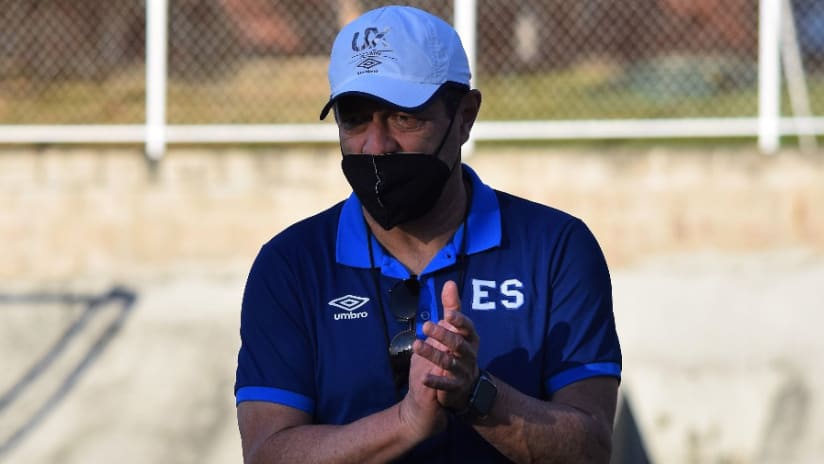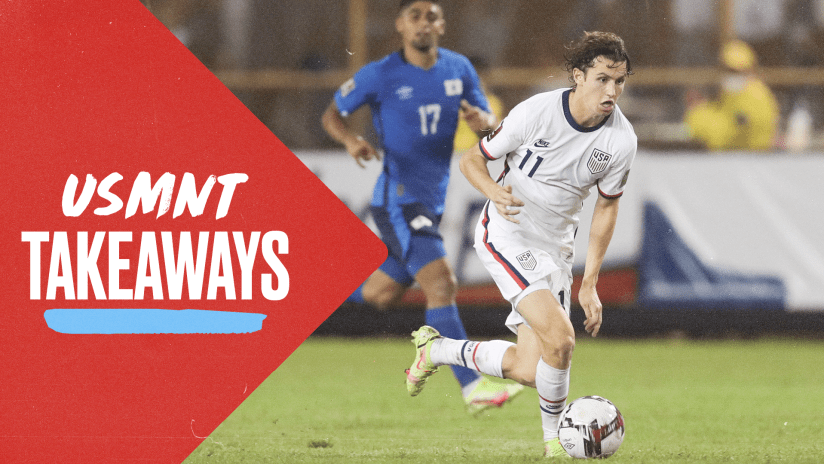“The kids that are being born now coming into the academies and clubs in this country have so much potential that it’s unbelievable. I was able to prove to myself, in a sense, that our kids in this country can play a beautiful style of football. The hardest thing was convincing the players that they could do it. Not because they couldn’t do it, but convincing them that they could do it without fear of being reprimanded for making mistakes, you know?
“We have to give our players the freedom to express themselves and play football.”
Hugo Perez’s words from 2015 sound prophetic today. He uttered them to me in the wake of his unexplained exit from the head coaching post of the US Under-15 boys national team, a role in which he and his staff identified and nurtured some of the country’s most talented prospects – many of whom advanced to professional careers and are now several key members of the senior squad that has so many fans so excited.
Tyler Adams, Weston McKennie and Christian Pulisic gained some of their earliest international experiences on Perez’s watch. Mark McKenzie, Sam Vines, Jonathan Amon and Jonathan Gonzalez, who once called him “one of the best coaches I've ever had,” figured prominently in his camps. The promise of future pros like George Acosta, Andrew Carleton, Ben Lederman, Matthew Real and Nick Taitague was also recognized and cultivated.
Several birth-year crops were drilled in a progressive, pass-happy playing style that bears some striking parallels to what Gregg Berhalter has installed in the US men’s national team since taking over in late 2018. Some of the tendrils of the youth movement that has invigorated the USMNT in the wake of the stinging failure to qualify for the last World Cup can be traced back to Perez’s efforts – the proactive philosophy, the diverse rosters pockmarked with technical players, the eagerness to compete for dual-nationals.
“He loved to play football, and he loved to get the ball on the ground and then play out of the back. That was his style,” Pulisic told ESPN’s Jeff Carlisle last month. “I think it was great for us to learn, and helped us a lot technically from a young age.”
It all comes full circle in San Salvador on Thursday night (10:05 pm ET | CBS Sports Network, Universo, Paramount+) as Berhalter and his golden generation face off with Perez, now leading a comparable renaissance with El Salvador, the country of his birth, in their opening match of the Concacaf Octagonal qualifying journey.
“Hugo was a hero of mine growing up,” Berhalter said of the National Soccer Hall of Famer in Wednesday’s pre-match press conference. “I used to watch him play and really admired what he did on the field and his amazing technical ability and the type of player he was. It's going to be an honor to coach against him. And I think he did a great job in our youth programs, really, I think embracing building technical players, building players that want to solve things with the ball, not only without the ball.
“He also creates a good mentality within his group. One thing I can guarantee you is El Salvador is going to be ready to play tomorrow. And it's up to us to be able to match what they’re bringing, if not exceed that.”
Born in El Salvador and raised in Southern California after his family emigrated when he was 11, Perez, was a silky No. 10 in an era when such skills were exceedingly rare among domestic players. He hit the pro scene just as the old NASL reached its deathbed in the 1980s, notably earning the respect of Johan Cruyff, who tried to bring him to Ajax Amsterdam only to be stymied by work permit issues.
“You couldn't stop him. He could cut you to the right, he could cut you to the left and then lay a ball 20 yards into space so a forward could run onto it,” extolled his former teammate Marcelo Balboa to ESPN in 2009. “You look at the history of U.S. soccer, and that was the first playmaker we really had with that much technical ability. He was the first American where you said ‘Wow.’”
It’s still not clear why Perez was removed and reassigned by the U.S. federation after two years in the U-15s post. Nor why the USMNT legend, a veteran of the 1994 World Cup team and a key figure in the landmark qualification effort of the 1990 cycle, didn’t parlay his work into a high-profile post on the United States’ domestic scene, eventually returning to the nation of his birth to take the next step forward in his career.
As a youth national team coach and scout, Perez advocated – some might say too stridently – for a possession-dominated ideology that some at the time considered unrealistic for young US players. But Berhalter’s renovation project has effectively vindicated that vision. Rather than view Perez’s move abroad as a setback for U.S. soccer at large, Berhalter hailed his counterpart as a trailblazing export.
“I wouldn't say it was a loss. I think it's a gain for the world of soccer, I think it’s a gain for American coaches going abroad and doing a good job,” said the current USMNT boss. “Hugo is a real plus for American coaches, to go do it and abroad, and we're proud to have him as an American coach.”
El Salvador are 6-3-2 under Perez, reaching the final phase of Concacaf World Cup qualifying for just the second time this century. While Los Cuscatlecos are slated as pronounced underdogs in the Octagonal, they’re unlikely to play like it, with both Perez and their traditional instincts more inclined to seek the initiative.
“The technical ability of the average El Salvadoran player is pretty good,” Toronto FC defender Eriq Zavaleta, one of several US-Salvadoran dual-nationals recruited by Perez, told ESPN. “And [as] a team that's not particularly huge or athletic or physical, it's difficult for teams to prefer to [defend and counter]. So instead Perez wants to be on the front foot, and to get some pressure on teams and to try to keep the ball and have some joy with it. If we're going to lose, we're going to lose that way.”
All of which makes Thursday a truly fascinating faceoff, between two programs intertwined by history and circumstance.













